(1)珠三角城市群大气成分站网
珠江三角洲位于中国南部,是由广州,香港,佛山,东莞,深圳和澳门等城市组成的超级大城市群地区。由于人类活动和飞速城市化进程,该地区产生大量的大气污染物。为了更好地研究该区域大气污染物的特性,华南区域气象中心从2003年开始在该区域建设大气成分观测业务站网,该业务站网目前已包括一个主站和十二个子站,主站广州番禺大气成分站位于广州番禺南村镇大镇岗山。中国气象局广州热带海洋气象研究所于2008年开始在主站建设大气物理与大气化学实验室。在2021-2022年期间广州热带所重新对主站进行升级改造,主要包括实验室一楼展厅、二楼实验室的设计布局及改造,以及业务站方舱更新扩容及自立铁塔建设。大气成分观测站网的主要目标是监测温室气体、大气气溶胶、反应性痕量气体、常规气象要素、大气辐射、干湿沉降等大气成分要素的演变过程与特征。针对珠三角地区大气污染严重的问题,我们正在开展碳源汇观测、臭氧光化学影响因子以及二次有机气溶胶形成机制等方面的研究。
(2)新丰国家大气本底站
温室气体浓度增加导致了全球变暖,气溶胶和臭氧浓度升高加剧了气候不稳定性,给人类生存与发展带来严峻的威胁和挑战。为了贯彻国家生态文明建设及应对气候变化战略,中国气象局部署建设了新丰国家大气本底站(简称新丰站)。新丰站位于广东省新丰县云髻山省级自然保护区大顶山, 2023年10月开始业务试运行,计划将于2024年12月投入业务运行,是我国第八个区域大气本底站,也是华南区域目前唯一的大气本底站,新丰站观测涵盖世界气象组织(WMO)要求的六大类大气成分要素(暨温室气体、气溶胶、反应性气体、辐射、干湿沉降、气象要素等),按WMO观测规范业务运行,已初步建设成为集科研、业务、试验为一体的先进综合观测基地。新丰站的建成,将弥补了华南地区本底监测的空白,加深大气成分本底特征及它们间的相互作用认识,对加强区域碳源碳汇、污染形成机制与环境气象的科学认知,对治理、改善环境、政府决策、服务于低碳经济和社会的可持续发展有重大的科学意义。
(3)空气负离子观测仪计量校准实验室
针对目前国内空气负离子观测仪缺乏科学统一标校标准的问题,初步建设了空气负离子观测仪计量校准实验室,现已能在实验室环境下产生可用于标校的离子源。开展了多种情景下空气负离子监测仪器的标定实验及影响因素分析。空气负离子观测仪计量校准实验室的建立将为中国天然氧吧观测仪提供标校等技术支持。
大气成分观测站网具有大量观测仪器和多个观测项目
-
温室气体
-
气溶胶光学/物理/化学特性
-
臭氧和气溶胶垂直廓线
-
气态污染物
-
光化辐射通量谱和紫外总辐射
-
地表通量和辐射平衡
-
温度,水汽和风廓线
-
常规气象要素
温室气体在线监测系统
Greenhouse gas concentration online monitoring system
温室气体是导致全球气候变暖的主要原因之一,通过观测它们在大气中的浓度,可以更好地理解气候变化的趋势。温室气体分析仪(LGR-ICOS,ABB Inc.)采用最新的离轴积分腔输出光谱技术(OA-ICOS)能够精确、准确、快速地测量环境空气中的CH4、CO2和H2O浓度。
Greenhouse gases are one of the main causes of global warming. By observing their concentrations in the atmosphere, we can better understand the trends of climate change. The greenhouse gas analyzer (LGR-ICOS, ABB Inc.) uses the latest Off-Axis Integrated Cavity Output Spectroscopy (OA-ICOS) technology to accurately, precisely, and quickly measure the concentrations of CH4, CO2, and H2O in ambient air.
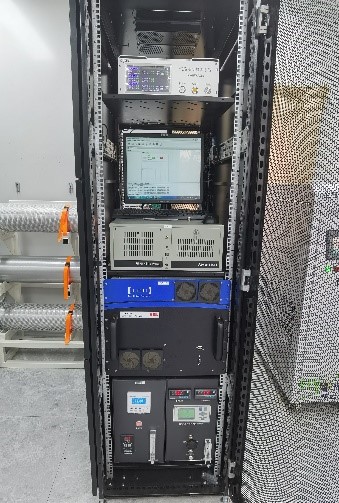
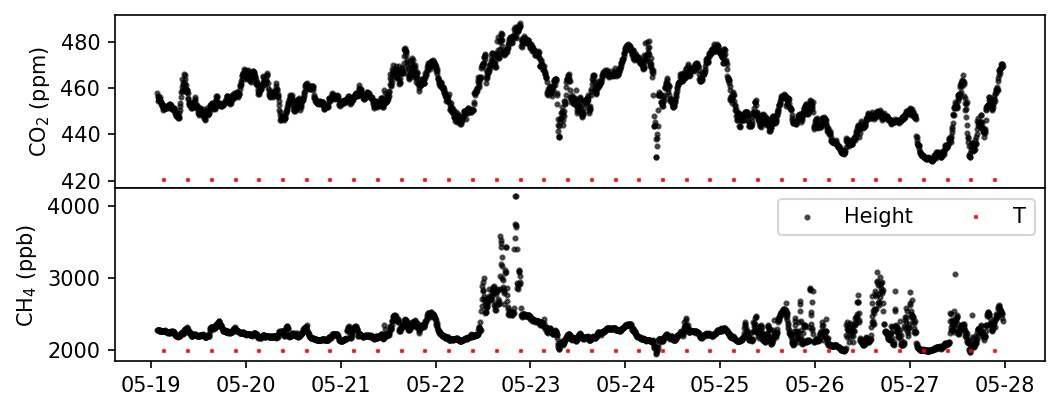
番禺站温室气体浓度周分析结果
The weekly analysis results of greenhouse gas concentrations at the PYU Station.
挥发性有机物在线监测系统
Volatile organic compounds (VOCs) online monitoring system
TH-300B大气挥发性有机物快速在线监测系统采用超低温空管捕集技术与气相色谱-质谱联用(GC-MS)检测技术,应用于在线监测环境空气中痕量挥发性有机物的浓度。它的测量范围涵盖PAMS物质(Photochemical Assessment Monitoring Stations,美国EPA光化学评估监测体系规定的56种臭氧前驱物,部分TO15物质、卤代烃及OVOCs
The TH-300B rapid on-line monitoring system for atmospheric volatile organic compounds (VOCs) is applied to on-line monitoring the concentration of trace VOCs in ambient air by using ultra-low temperature empty tube trapping technology and gas chromatogram-mass spectrometry (GC-MS) detection technology. Its measurement range covers PAMS substances (Photochemical Assessment Monitoring Stations), 56 ozone precursors specified by the EPA photochemical Assessment Monitoring System, some TO15 substances, halocarbons and OVOCs.

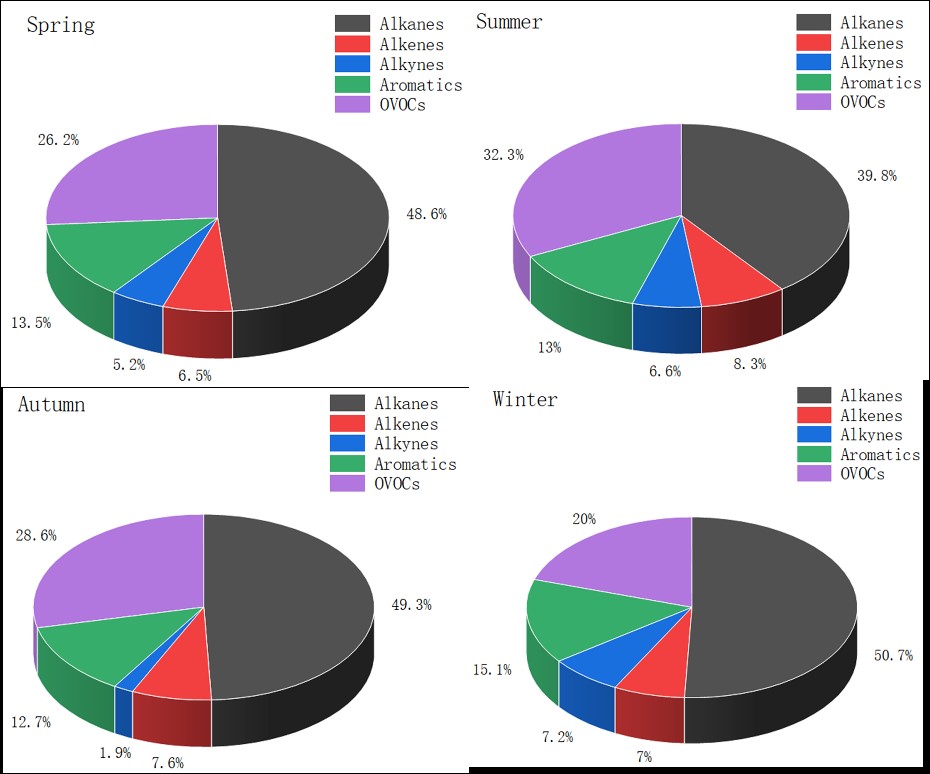
广州各季节全谱VOCs(NMHCs + OVOCs)的组分比例
The composition ratios of the full spectrum of VOCs (NMHCs + OVOCs) in Guangzhou in different seasons
高分辨率差分电迁移率分析仪
High-Resolution Differential Mobility Analyzer
高分辨率差分电迁移率分析仪(HRDMA)通过优化 DMA 的内部几何构造和提升 DMA 加工精度,以显著提升鞘流流速,并确保 DMA 粒径筛分区域在鞘流的雷诺数大于 10000时仍然保持层流。相对于传统 DMA,HRDMA 的显著特点包括鞘流在超临界状态下工作,缩小粒径筛分的工作距离,适当提升样流流速以减少粒子在 DMA 中的停留时间和扩散损失等,可以对更小粒径的粒子进行分析。
The High-Resolution Differential Mobility Analyzer (HRDMA) significantly enhances sheath flow rate by optimizing the internal geometry and improving the manufacturing precision of the DMA. It ensures that the particle size selection region of the DMA maintains laminar flow even when the Reynolds number of the sheath flow exceeds 10,000. Compared to traditional DMAs, the notable features of the HRDMA include operating the sheath flow in a supercritical state, reducing the working distance for particle size selection, and appropriately increasing the sample flow rate to minimize particle residence time and diffusion losses within the DMA. These improvements allow for the analysis of smaller particle sizes.
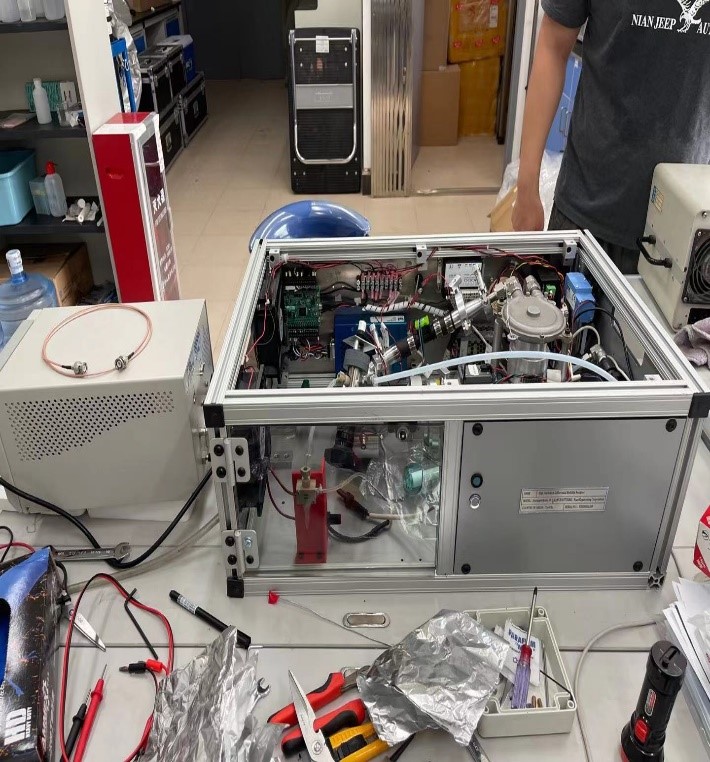
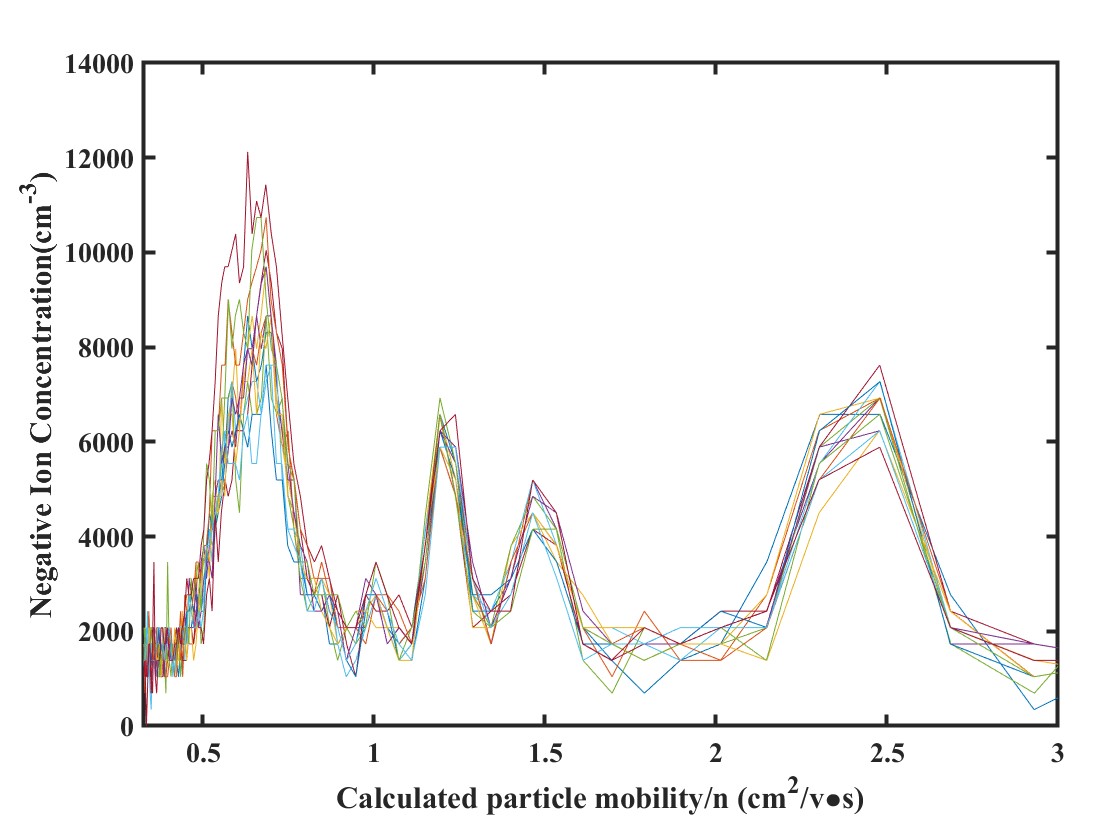
纳米粒子的电迁移率分析结果
气溶胶化学组成在线监测仪
Aerosol Chemical Speciation Monitor
气溶胶化学组成在线监测仪(ACSM)能够实时并直接地定量测量 PM1 (<1µm)气溶胶中非难熔性组分(简称: NR-PM1)的质量浓度和化学组成,包括有机物、硫酸盐、硝酸盐、氨盐和氯离子。通过对有机气溶胶质谱进行正矩阵因子解析(PMF等), 可以区分和得到不同种类的有机气溶胶,包括HOA(烃类有机物,主要为一次燃烧源排放),OOA(氧化态有机物,主要为二次有机气溶胶)和BBOA(生物质燃烧示踪物)等。
The Aerosol Chemical Speciation Monitor (ACSM) measures aerosol mass and chemical composition of non-refractory submicron aerosol particles in real-time. It provides composition information for particulate ammonium, nitrate, sulfate, chloride, and organics. In addition, the time series collection of mass spectra can be processed using multivariate factor analysis methods (such as Positive Matrix Factorization – PMF) to extract chemically distinct groups, including HOA (hydrocarbon organic aerosols, primarily emitted from primary combustion sources), OOA (oxidized organic aerosols, primarily from secondary organic aerosols), and BBOA (biomass burning tracers).
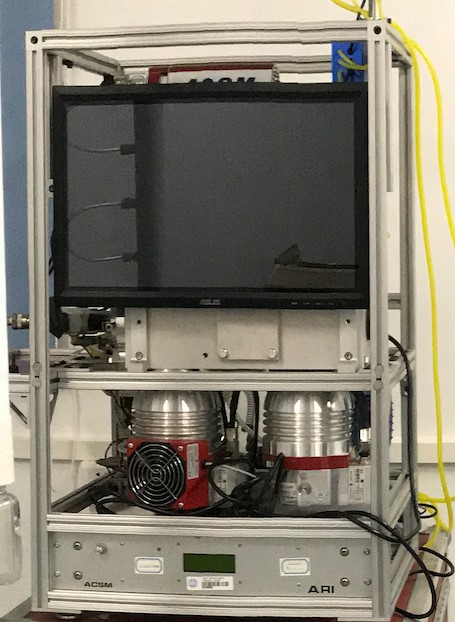
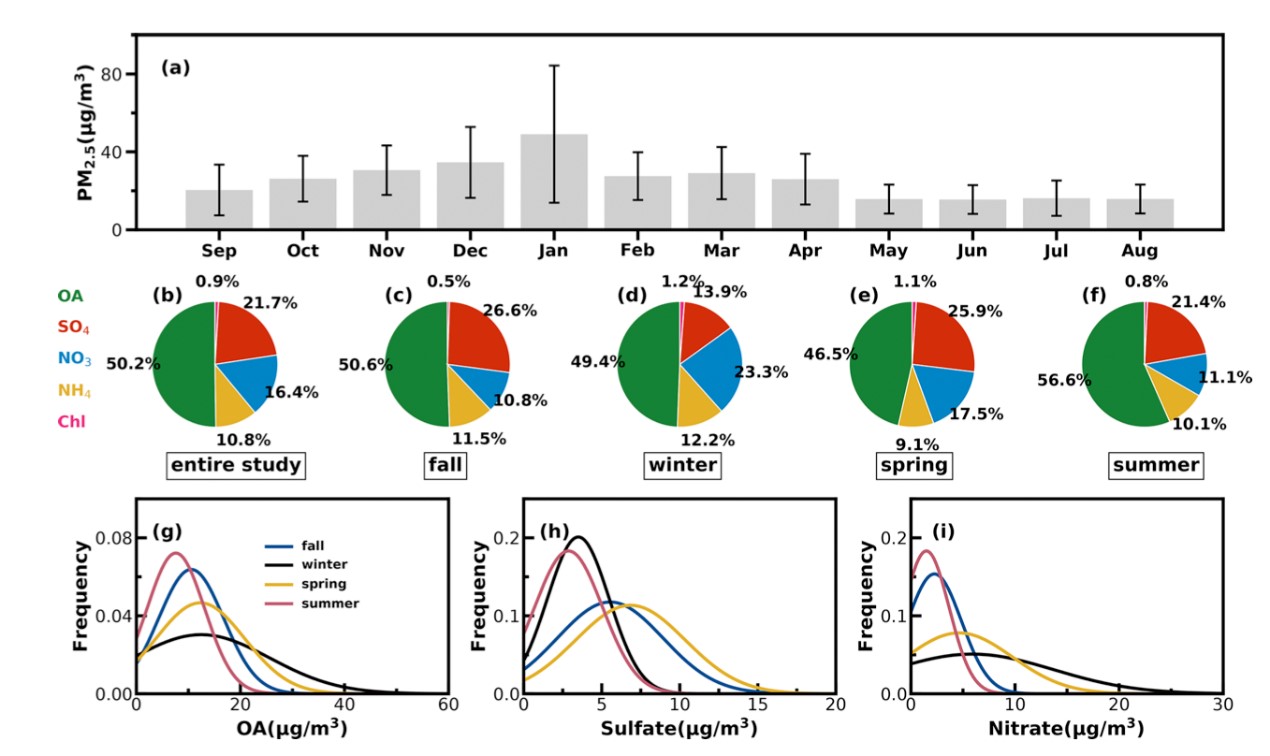
广州番禺大气成分站全年及各季节NR-PM1中化学组分分析结果不同季节有机气溶胶、硫酸盐和硝酸盐的概率分布。
The average mass fractions of the chemical components in NR-PM1 of the entire year and different seasons and the probability distributions of OA, sulfate (SO4) and nitrate (NO3) in different seasons.